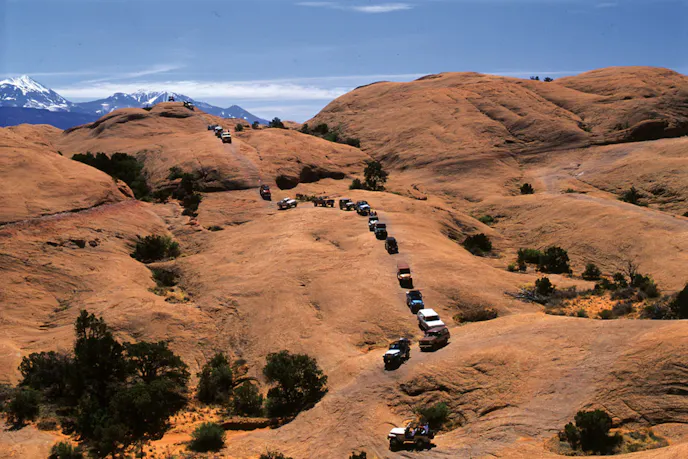Special Equipement Market Association (SEMA) Action Network is helping off-roaders out by taking a stand to protect enthusiasts from unreasonable government actions that threaten their vehicles, whether on the highway or back0country trails.
 SEMA is looking after these issues for not only the enthusiast, but for the companies that offer the products for the industry as well. SEMA understands that it is harder for businesses to market off-road products when there are fewer places to enjoy them.
SEMA is looking after these issues for not only the enthusiast, but for the companies that offer the products for the industry as well. SEMA understands that it is harder for businesses to market off-road products when there are fewer places to enjoy them.
These are not made up stories on places that may get shut down or areas that it could happen. The issues they deal with are in areas that are being affected at the moment. Land usage closures are happening all over the United States. They are not focused to just one particular area.
In the last couple decades, thousands of miles of roads and trails across the nation have been closed due to restrictions on what can and cannot be used on the land. It is a growing trend even to this day.
 Here in California motorized access to the desert has shrunk from 50 percent open use on public lands in 1976 to 12.5 percent in 2007. It may not seem like a lot until it is realized that only 2 percent of the California desert is currently open to off-highway vehicles (OHVs).
Here in California motorized access to the desert has shrunk from 50 percent open use on public lands in 1976 to 12.5 percent in 2007. It may not seem like a lot until it is realized that only 2 percent of the California desert is currently open to off-highway vehicles (OHVs).
It is a crucial time to look at these issues for off-roading, as most federal public land is managed by the U.S. Forest Service (USFS) and the U.S. Bureau of Land Management (BLM). Each of these agencies look at there policies and review them, and as much as we do not want it to happen, it results in closing of areas used for off-roading.
The struggle to keep land open for OHV use happens all the time. There are success stories with SEMA helping to defend the land. Some recent success stories have been in Johnson Valley in California, Hermosa Creek in Colorado, and Cape Hatteras in North Carolina.
The success story in Johnson Valley helped save 96,000 acres from the expansion of a U.S. Marine Corp base. This land is where the King of the Hammers event happens each year and could of jeopardized the event all together if the closure occurred.

In Hermosa Creek, SEMA was able to get Congress to designated 70,650 acres of federal land as the “Hermosa Creek Special Management Area,” which allows for continued motorized vehicle and snowmobile access. SEMA was able to get the Department of the Interior to amend its 2012 Recreation Area rule to allow OHV access, in Cape Hatteras. They were also able to create new vehicle access points and roads all while allowing access to seasonal routes for longer period of times.
The largest issue affecting OHV area is with land getting added to the Wilderness System. There is current legislation pending that would add more land to the system which will stop all OHV access. In addition to the Wilderness System, more land is getting designated to create national monuments which will also stop all OHV to that land.

Another major law SEMA is trying to fight is the Endangered Species Act. This act closes down land in an effort to protect a particular species. The act has set aside large parts of land, instead of creating smaller, easily manageable areas. The OHV community has been restricted access to many trails because of the act, but there has not been much success at actually protecting a particular species.
Some current areas that SEMA is working on protecting are ROV Standard. They are fighting the Consumer Product Safety Commission for recreational off-highway vehicles to favor an existing industry standard that allows for future design innovations and allow for plenty of ROV uses.

The Moab Utah Trail System is also under fire from being designated a national monument, and being closed for all OHV use. In the Bonneville Salt Flats SEMA is working to find a comprehensive salt-replenishment program between the BLM, racing community, and private landowners.
These issues should not be taken lightly as these are real issues that can close areas that families have been going to for years. Father’s take their sons, with the sons later returning with their kids because of the memories they had growing up. Any effort that can be helped to protect the land used for off-roading should be on the top of all our minds.
You might also like
2027 Ram TRX: The Apex Predator Returns, Now With 777 Horsepower
The 2027 Ram TRX returns with 777 horsepower, SRT engineering, advanced off-road suspension, and luxury tech.



